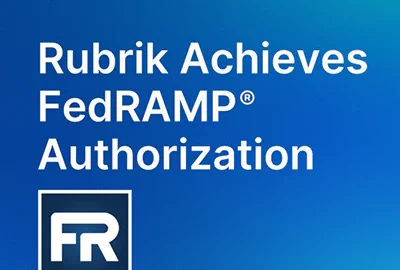Insight by Commvault and AWS
To optimize your agency’s cloud usage, consider optimizing your people
The ability to quickly spin up a new app or access compute on demand are typical of the capabilities that make cloud’s OpEx cost model attractive. AWS and...
One of cloud computing’s benefits is it lets agencies move from a capital expenditure approach to their information technology to an operating expense model.
Why is OpEx favorable to CapEx? Because an agency rarely has a consistent compute demand. For instance, deploying a new enterprise or mission-related application might require significant compute capacity. With a cloud OpEx model, an agency can tap cloud capacity almost immediately, rather than launch a two- or three-year hardware procurement and install. Plus, after standing up the app, it need only pay for the capacity it uses day in and day out.
But at-scale adoption of cloud computing, even when an agency retains data centers for some functions, changes network topology, application design, cybersecurity approaches, and IT operational and business practices. That, according to Sean Phuphanich, senior solutions architect at Amazon Web Services (AWS), calls for a reskilled staff to realize cloud benefits — and to do so efficiently.
Cloud-driven evolution of IT management
The emergence of cloud changed IT management in many ways, Phuphanich said during Federal News Network’s Industry Exchange Cloud. For example, it let agencies dispense with remote backup sites, so cybersecurity threats supplanted physical threats to infrastructure from natural disasters. Cloud brings newer technology for development and maintenance of applications, resulting in more frequent and dynamic releases too.
“And so governments and agencies have had to become more dynamic,” he said, “and be able to update these older systems, be able to change their architecture and their security.”
Fundamentally, added Richard Breakiron, senior director of strategic initiatives for the Americas Federal Sector at Commvault, “the reason you go to cloud is you wanted operational resiliency. You wanted to build the ability to scale without having to say, ‘Oh my God, I have to go out and do a contract for that whole new set of infrastructure for my on-prem solution.’ ”
Both Phuphanich and Breakiron said the pandemic expanded cloud adoption in at least two ways. It forced many people to work remotely, exposing the advantage of cloud over the client-server model, for which remote access can be complex and costly. And it reinforced the idea that large-scale applications can launch quickly.
“Agencies were kind of forced to consider cloud. Fortunately, they were very successful in a lot of those early endeavors — turning around things within a matter of weeks or months” — and not needing to execute hardware acquisitions, Phuphanich said.
Achieving cloud operational efficiency
Achieving operational efficiency in cloud environments requires attention to both how an agency chooses to store and handle data and how it optimizes costs.
On the cost front, agency IT managers are always concerned about the data egress charges cloud service providers impose. That question is “one we hear all the time at Commvault,” Breakiron said. “Wouldn’t it be nice if you could just have no egress charge, that you could have unlimited storage, unlimited time, and have that type of capability integrated in the contract? And so we built that.”
He urged agencies to do detailed planning for any cloud implementation and to consider working with partners that have experience dealing specifically in hybrid environments. And it’s also critical to realize that an agency might need multiple partners, Breakiron added.
That will be needed so that agencies can tackle a sweep of efforts, such as zero trust, availability of data in the right quantities for analytics and artificial intelligence training, and effective cost controls through constant capacity tuning, he said.
With respect to that last point, scaling up and down as required, Breakiron suggests that many IT leaders will have to upskill their teams, for instance, answering questions such as, “As I scale up, does it automatically scale down? Or do I have to tell the cloud I opened up my doors at 6 a.m. and I shut down at 6 p.m.?”
Phuphanich said IT staffs will also need to learn how to design cloud deployments depending on the scale. He cited an “internet scale” application, hosted by AWS, to let every household in the U.S. order and have the Postal Service deliver COVID-19 test kits.
“You’re not deduplicating data in that instance,” he said. “You’re using something like object storage that can scale massively into terabits per second.”
In a traditional workload, with network-attached storage, a finite number of users and predictable use patterns, “you can optimize around efficiency, use things like deduplication and compression to get those storage costs down, and make sure that you’re not wasting additional storage when people are sharing a lot of similar files or working on a lot of similar documents,” Phuphanich said.
Given that data access is tantamount to operational readiness, in both civilian and defense settings, Breakiron said IT practitioners also will have to upskill their understanding of what causes service interruptions. Before cloud, IT would look for a broken cable, a down radio system or a crashed modem.
In the internet-connected cloud era, he said, “you’ve got to also make sure you know how to troubleshoot when things go a little bit sideways. Different skills again.”
Ultimately, rethinking how agencies manage their resources in the cloud and training staffs accordingly is needed to ensure resiliency, Breakiron said. “If we cannot maintain our access to the data, be it in the cloud or be it in a deployed tactical unit, then many of the systems that have totally moved to a digital world are going to be a constraint rather than a positive.”
To listen and watch other Industry Exchange Cloud sessions, visit our event page.
Copyright © 2025 Federal News Network. All rights reserved. This website is not intended for users located within the European Economic Area.
Related Stories
Featured speakers
-

Sean Phuphanich
Senior Solutions Architect, Amazon Web Services
-

Richard Breakiron
Senior Director for Strategic Initiatives, Americas Federal Sector, Commvault
-

Tom Temin
Host, The Federal Drive, Federal News Network
Upcoming Events
Related Stories
Top Stories

Sean Phuphanich
Senior Solutions Architect, Amazon Web Services

Richard Breakiron
Senior Director for Strategic Initiatives, Americas Federal Sector, Commvault

Tom Temin
Host, The Federal Drive, Federal News Network
Tom Temin has been the host of the Federal Drive since 2006 and has been reporting on technology markets for more than 30 years. Prior to joining Federal News Network, Tom was a long-serving editor-in-chief of Government Computer News and Washington Technology magazines. Tom also contributes a regular column on government information technology.






